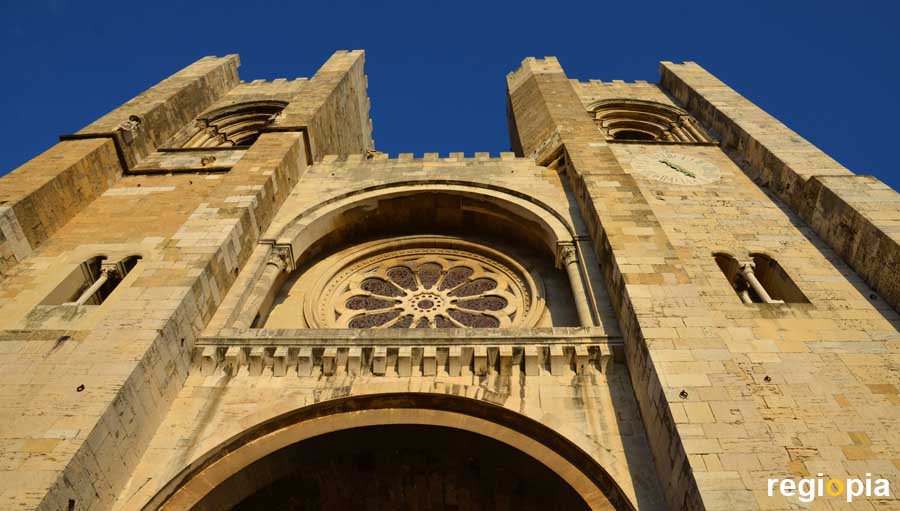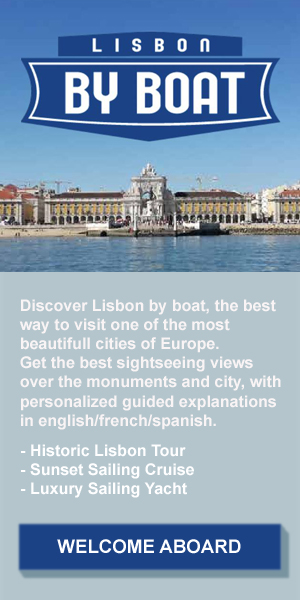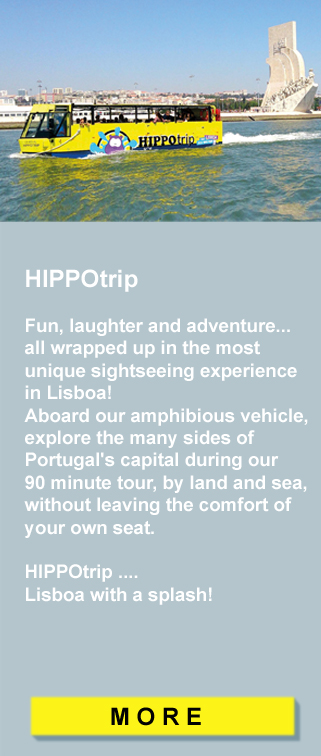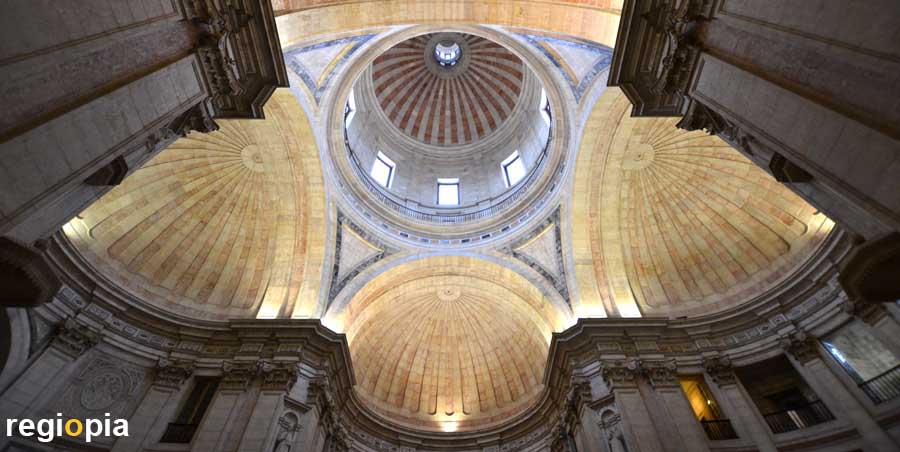
Panteão Nacional
The Panteão Nacional is the Portuguese "Hall of Fame", featuring the sarcophagi of famous figures such as the discoverer Vasco da Gama and the Fado singer Amália Rodrigues, whose music is played in the Pantheon. Actually, the building was begun as Igreja de Santa Engrácia in 1683. When the architect João Antunes died, the project was ended by the king. Under the rule of dictator Salazar the dome was completed in 1966 and the building opened as "Panteão Nacional". However, many graves are empty, these so-called cenotaphs are only a symbolic honor of the deceased celebrities. Stairs lead to an upper level from which you can look into the magnificent interior. If you follow the steps further up, you will reach the roof, from which you will have a wonderful view over Alfama.
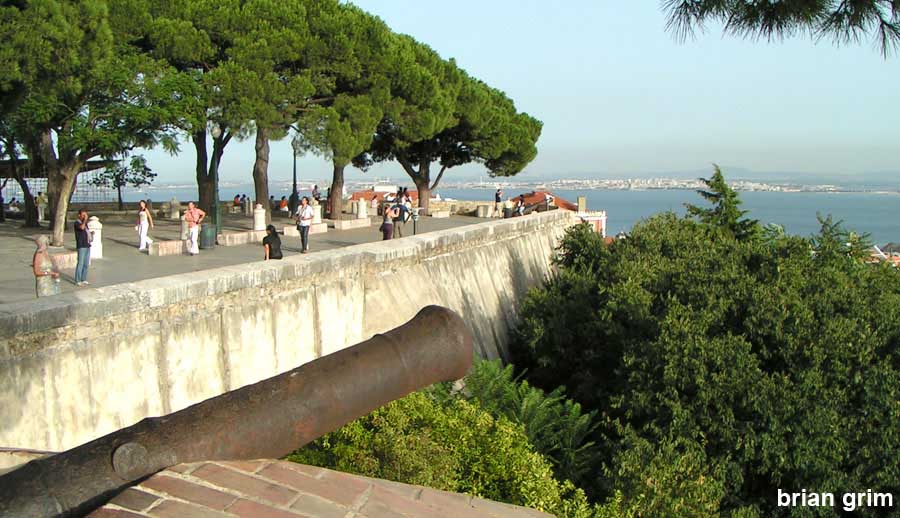
Castello de Sao Jorge
The castle of Sao Jorge is one of the top attractions of Lisbon. From the caste on die hilltop you will have a great view over Lisbon and the Tagus bay. Phoenicians and Romans have settled on the hill and Alfonso I, the first king of Portugal, defeated here the Muslim invaders in 1147.
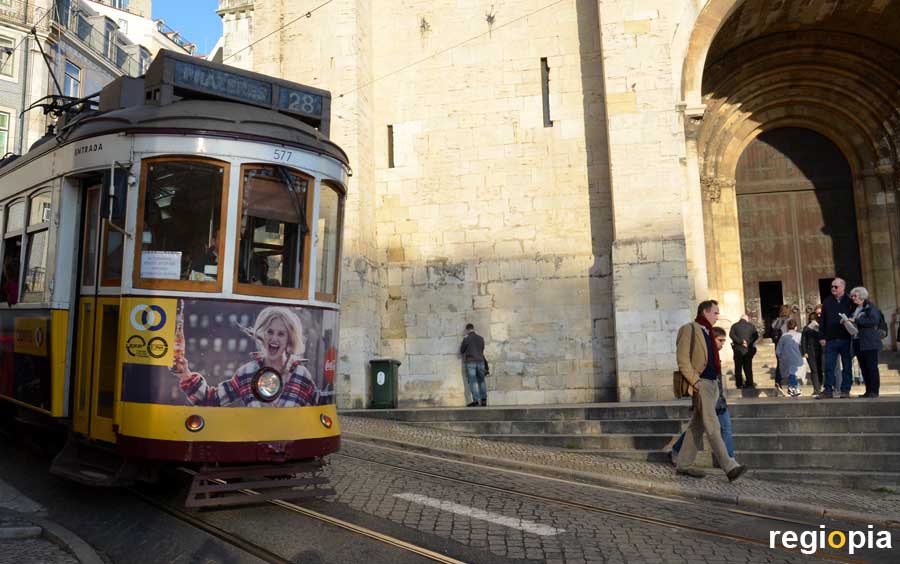
Electrico
Since 1901the little trams rattle through the narrow streets of Lisbon. A trip on line 28, from the lower town of "Baixa" to "Alfama" on the hill, is the most beautiful route. The wooden tram winds up the mountain in tight slopes. The Electrico is one of the most famous tourist attractions of Lisbon.
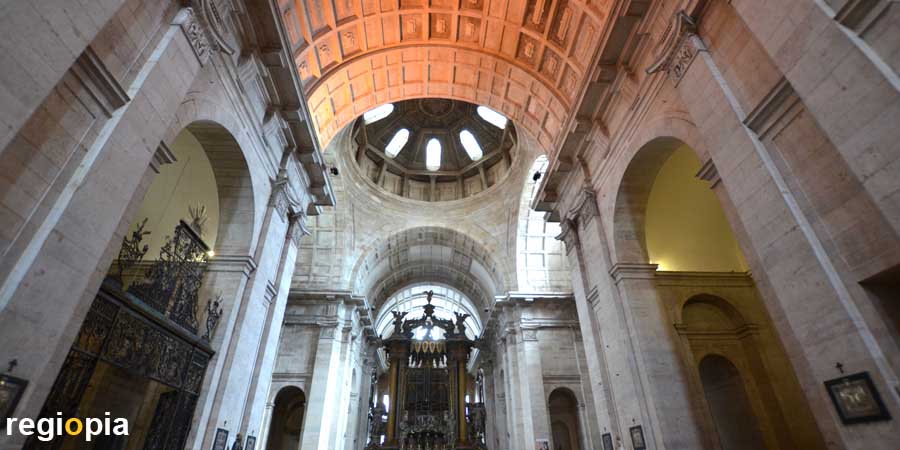
São Vicente de Fora
The monastery of São Vicente de Fora was founded in the year of the conquest of Lisbon in 1147 by King Dom Afonso Henriques. The addition "de Fora" (outside) indicates that the church was still outside of the city walls. In 1590 São Vicente de Fora was rebuilt by King Philip II. The builders Herrera, Álvares and Terzi planned the new church in a simple style following the model of Il Gesú in Rome. The church was consecrated to St. Vincent and Sebastian, the nave depicts the symbols of the two saints. Vinzenz was grilled as a martyr on a rust, defended by two ravens and sunk with a millstone in the sea. Sebastian was pierced by arrows, survived and was then killed and thrown into the Cloaca Maxima of Rome. In the two patios of the monastery, there are wunderful azulejos tiles.
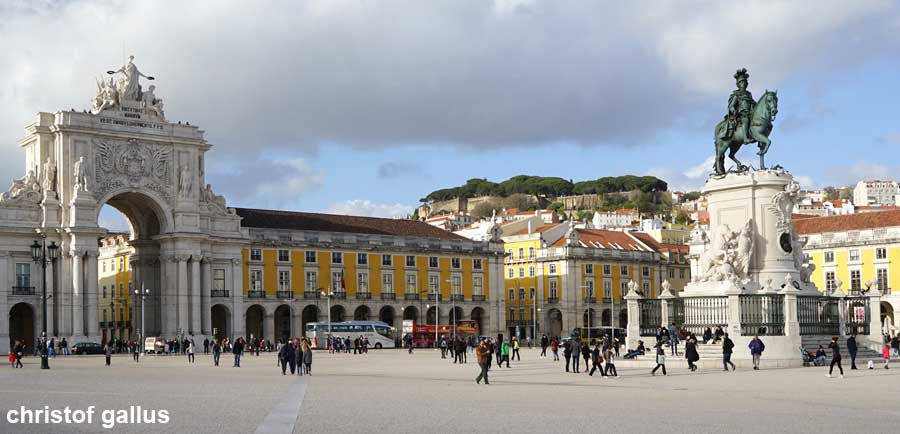
Praça do Comércio
The "Praça do Comércio" (place of trade) is the access gate from the sea to the city. Until the earthquake of 1755, the palace of King Paço da Ribeira stood on this square, which was then called Terreiro do Paço. Through the "Arco Triunfal" you will enter the district of Baixa Pombalina.
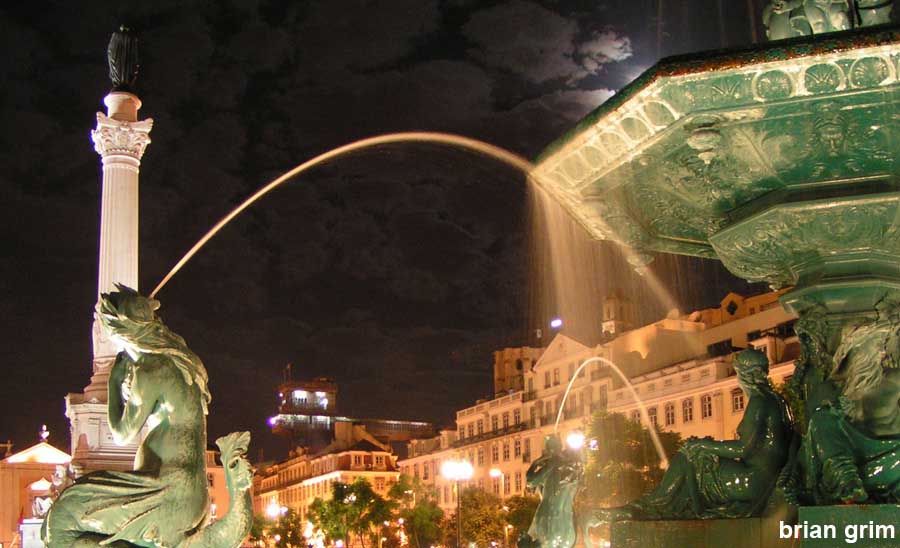
Praca Dom Pedro IV
The square "Dom Pedro IV" is also called "Rossio", it was built after the earthquake in 1755 as part of the new grid of the new city. At the north end of the square there is the "National Theater". On the column on the square stands the King Dom Pietro IV.
ads
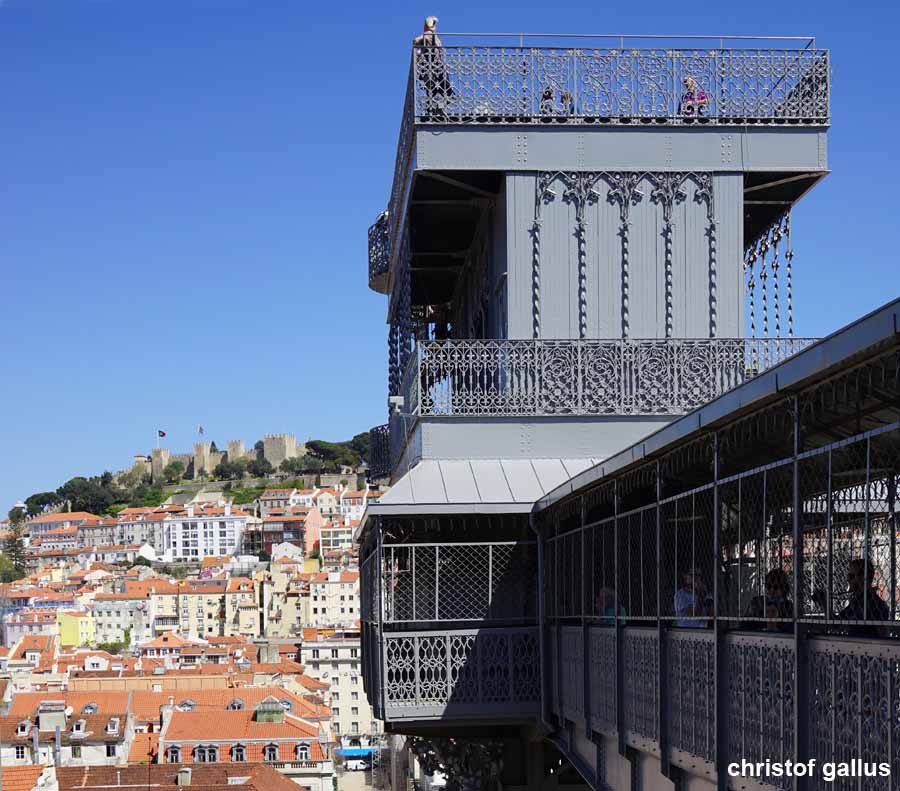
Elvador de Santa Justa
The "Elvador de Santa Justa" connects the district of Baixa, with the higher district of Chiado. The elevator, made of gothically decorated cast iron elements, was built in 1901 and surmounts a height difference of 32 meters. The elevator was designed by Raoul Mesnier de Ponsard. Over the elevator there is a café and a lookout platform from where you get a nice overview of Lisbon.
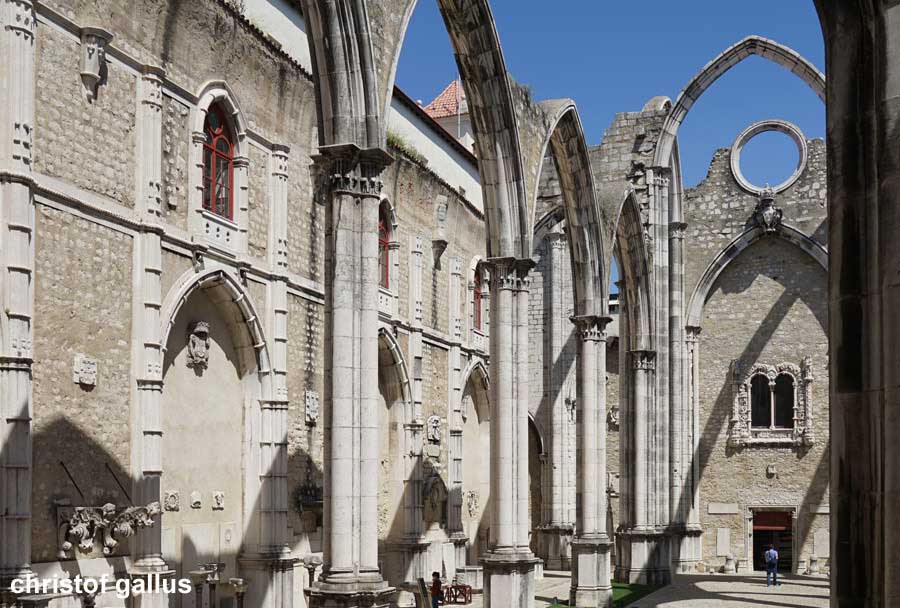
Convento do Carmo
The Convento e Igreja de Nossa Senhora do Carmo was built between 1389 and 1423. After the completion the donor Nuno Álvares Pereira lived as a monk in the monastery. He was canonised in 2009 by Pope Benedict XVI. The Gothic monastery complex was one of the most magnificent churches in Lisbon until it was destroyed in 1755 by the great earthquake. The earthquake devastated the whole city, and there was not enough money to rebuild the Convento do Carmo. Since then, only the ruins of the church stand at the Largo do Carmo. Former objects from the medieval monastery can be seen in the Museu Arqueologico do Carmo.
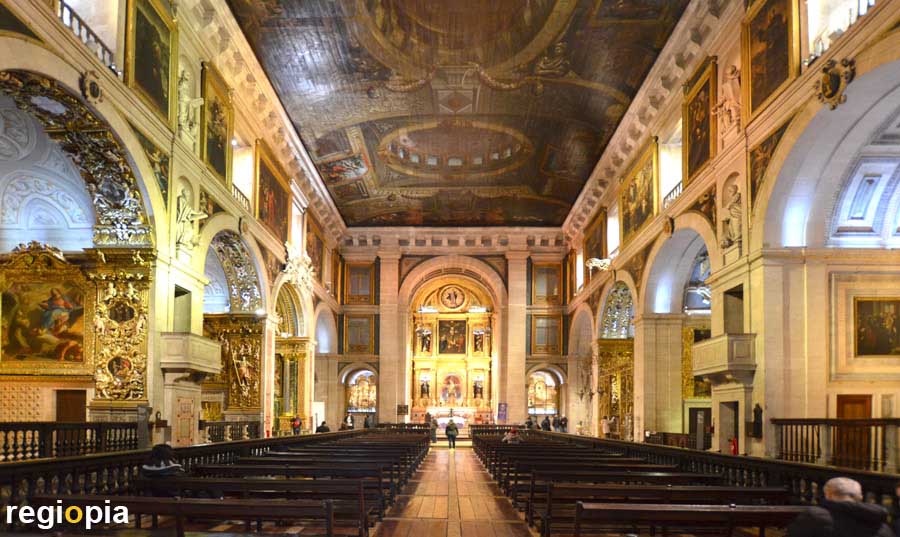
Igreja de São Roque
From the outside, the church of São Roque seems inconspicuous, this style is called "Estilo Chão" (simple style). From inside you will get a very different picture, here are the richly decorated chapels, which are lined up on the nave, 4 on each side. The Igreja de São Roque is dedicated to St. Rocco, who cured plague and is the patron saint of hospitals. His symbol is a dog with a bun in its mouth, which can be discovered in various places in the church. One of the side chapels is dedicated to São Roque. This chapel is distinguished by its yellow-blue azulejos by Francisco de Matos, which were installed in 1584. Architect Afonso Alvares began in 1566 with the construction of the church, which was completed in 1596. Since São Roque was one of the few churches in Lisbon that was not destroyed by the earthquake of 1755, the wooden ceiling with the perspective painting by Francisco Venegas has been preserved. This makes São Roque one of the most significant churches in Europe.
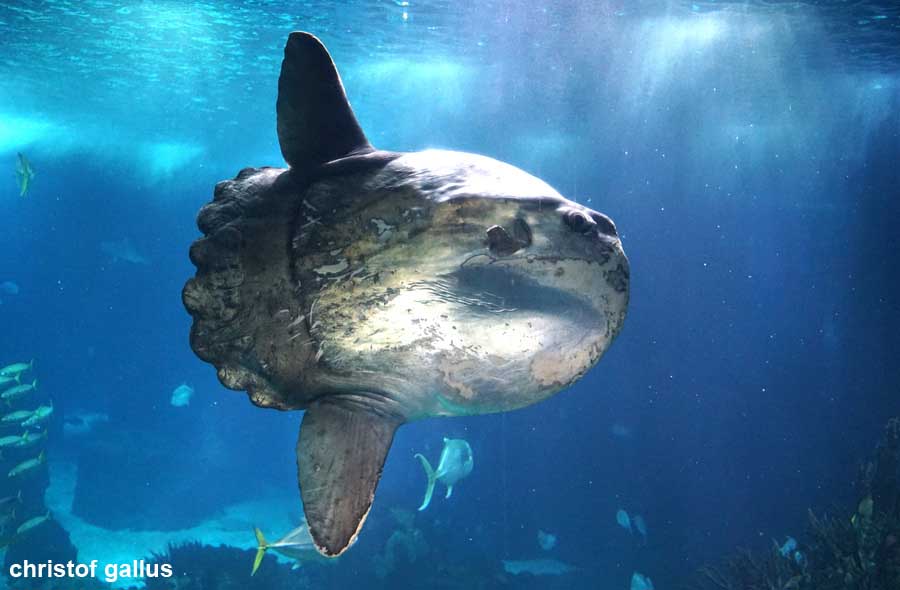
Oceanario
The Oceanário is an aquarium in the Park of Nations. It was built for the World Fair 1998 and was the largest marine aquarium in Europe at that time. Today it is one of the major tourist attractions of Lisbon. In addition to incredible fishes, the aquarium also shows other marine animals such as cute sea otters and penguins. The cubic structure stands directly in the water.
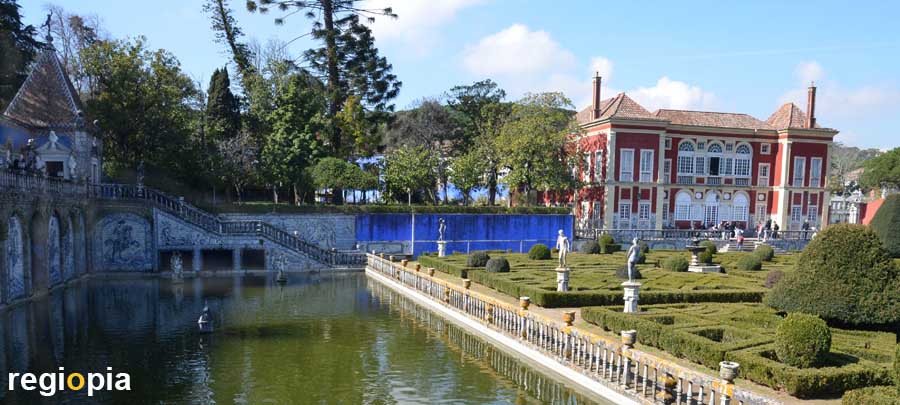
Palácio Fronteira
The Palácio dos Marqueses de Fronteira is famous for its garden with the "Galeria dos Reis" (Gallery of Kings). The Palácio Fronteira was built in 1672 by the Marquês de Fronteira. The "Galeria dos Reis" is an azulejo terrace on which the kings are lined up as busts in niches. In front of the gallery there is a pool, where staircases on both sides leads up to the gallery. Adjacent to the pool is the Great Garden with figures and fountains. On a slightly higher level there is the Venus Garden, which is bordered to the north by the palace. In the palace, the "Sala dos Paineis" (Hall of the pictures) is the most famous room. This room is decorated with Azulejo panels from the Amsterdam workshop of Jan van Oort, depicting scenes from Greek mythology.
By underground to Jardim Zoologico, Rua das Furnas, Rua São Domingo de Benfica, over the railway bridge and up the hill. (on foot about 1 km / 15 min) For opening hours see link.
Largo São Domingos de Benfica 1
ads
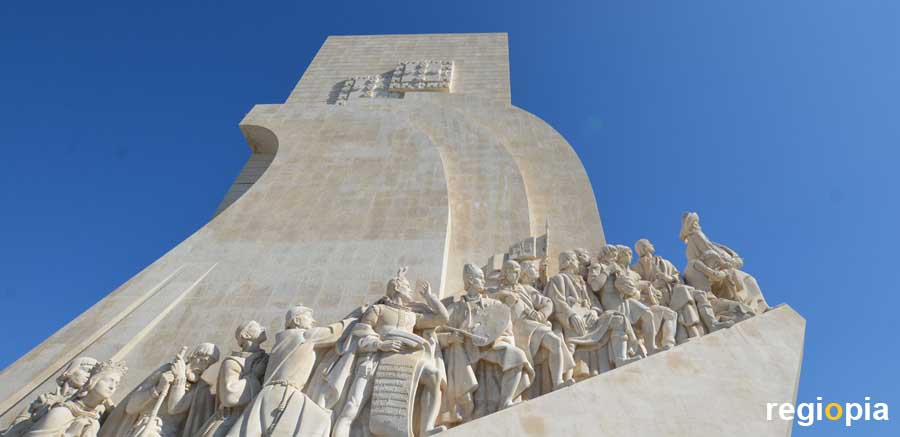
Padrão dos Descobrimentos
The "Monument to the Discoverers" Padrão dos Descobrimentos was built in 1960. 500 years after Dom Henrique died, who commissioned the great voyages of discovery and thus initiated European dominance on the world's oceans. All of Portugal's great explorers are represented on the monument. One of the most famous discoverers of Portugal is Pedro Alvares Cabral, who discovered Brazil in 1500. Bartolomeu Diaz who explored the west coast of Africa and was the first to sail around the Cape of Good Hope. The best-known Portuguese explorer is Vasco da Gama, who in 1499 was the first European to discover the sea route to India and the Arabs' monopoly on spices was broken. Portugal becomes a world power through the spice trade. The first circumnavigation of the world was made by Fernando Magellan's fleet, who was murdered by indigenous peoples in the Philippines and was unable to complete the circumnavigation of the world himself. Right at the front is Dom Henrique, who financed the first voyages of discovery.
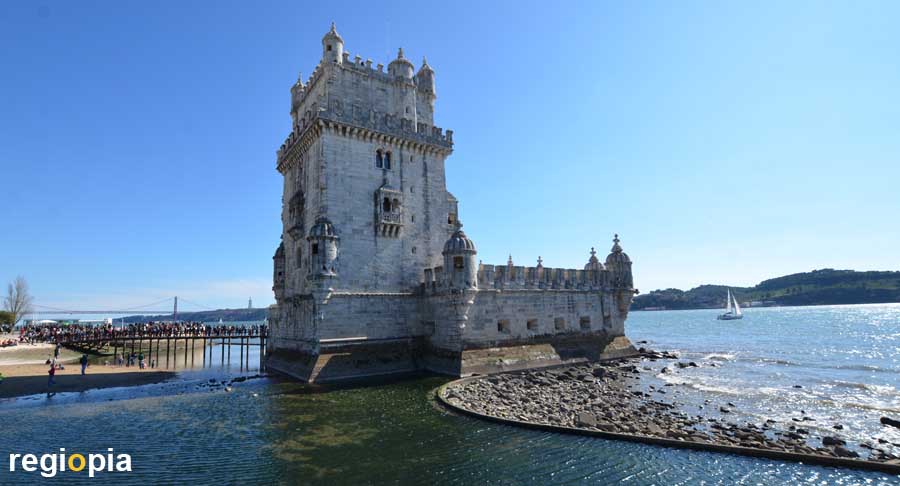
Torre de Belém
The "Torre de Belém" was built in 1515 as protection of the harbor, along with another tower on the southern Tagus banks. The southern tower was destroyed by a severe earthquake in 1755. The "Torre de Belém" is the symbol of Portuguese explorers and a UNESCO World Heritage Site since 1983.
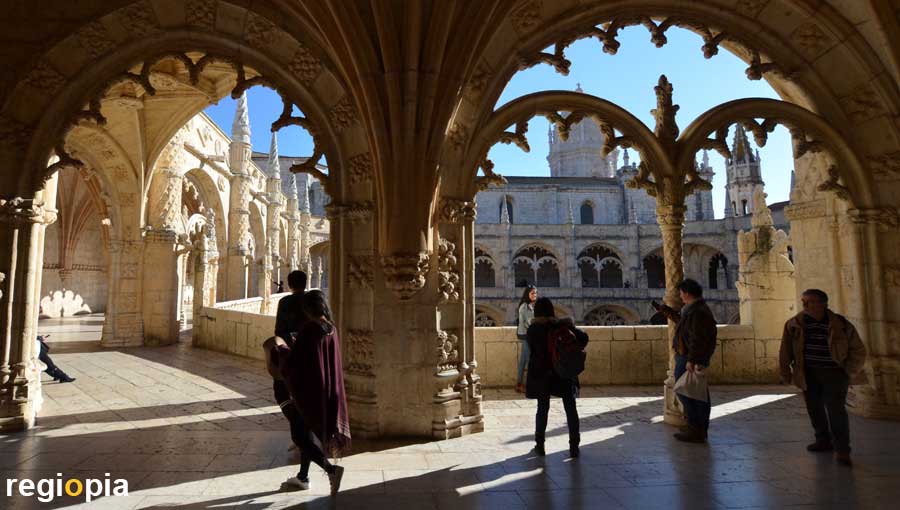
Mosteiro dos Jeronimos
Manuel I built the monastery in Belém (Bethlehem) from 1501 onwards, in order to create a tomb for his dynasty. The late Gothic "Mosteiro dos Jeronimos" was completed in 1601. The monastery is since 1983 on the list of the UNESCO World Cultural Heritage.
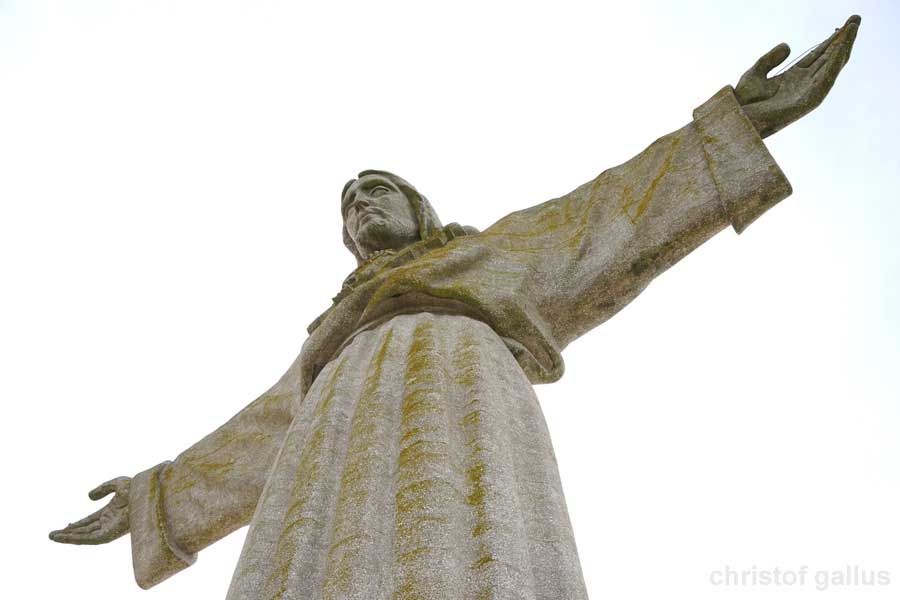
Cristo Rei
The statue of Christ of Lisbon goes back to a vow in 1942 by the Portuguese bishops, who promised to build a statue of Jesus if Portugal is not involved in the Second World War. In 1959, the "Cristo Rei" statue was created by Francisco Franco. The similarity to the Jesus in Rio de Janeiro is unmistakable. The King of Christians stands on an 82 m high pedestal, the statue itself is 28 m high. A lift will take you to the observation deck, from where you will have a wonderful view on the "Ponte de 25 Abril" and the Tagus with Lisbon in the background.
How to get there: By ferry from Cais do Sodré to Cacilhas, take bus No. 101 to Cristo Rei.
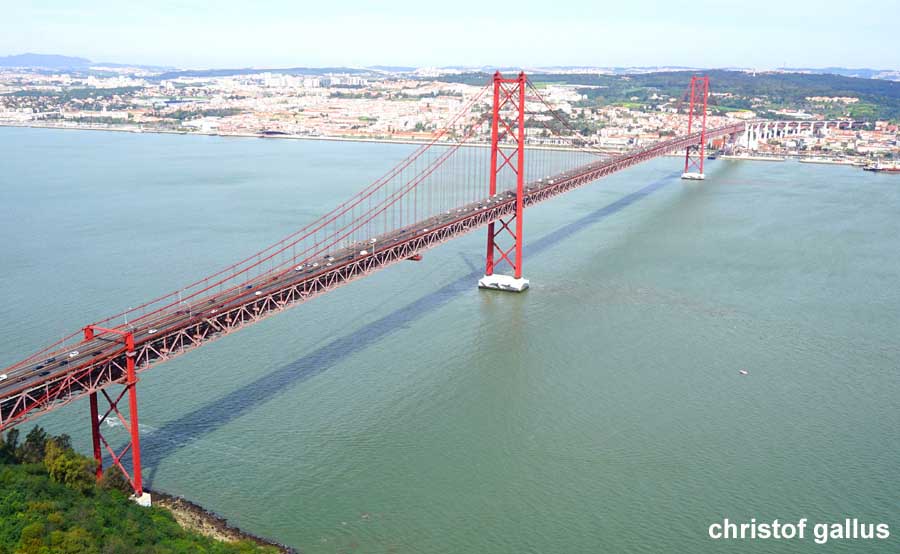
Ponte de 25 Abril
The red suspension bridge was opened in 1966 under the rule of dictator Salazar. By then the bridge was called "Ponte Salazar". The similarity to the Golden Gate Bridge in San Francisco is not accidental, the "Ponte de 25 Abril" was built by the company US Steel. In contrast to the American predecessor, the 2.2 km long bridge has a second level on which trains can pass the river Tagus. On April 25, 1974, the population of Lisbon put carnations in the rifle barrels of the soldier who began a military coup. The dictatorship of Caetano was over and the carnation revolution led to democracy in Portugal. The "Ponte Salazar" became the "Ponte de 25 Abril".
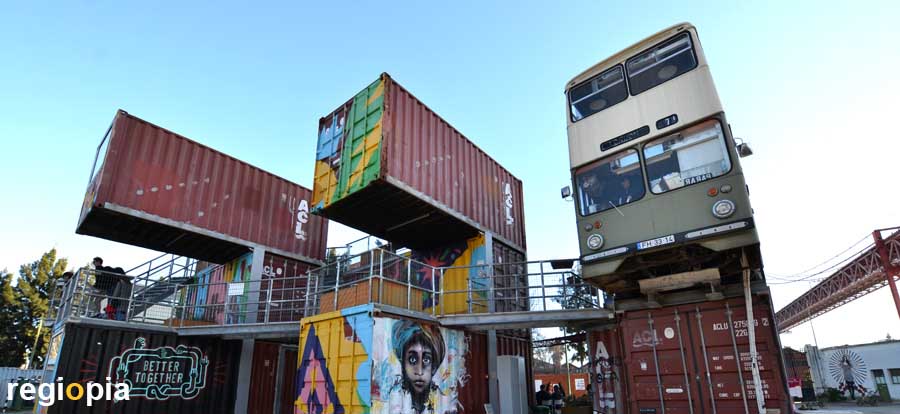
Village Underground Lisboa
The "Village Underground Lisboa" is just next to the LX Factory. It is a small urban village of containers and double-decker buses. In addition to coworking areas, the Untergrund Village also has a café, a gallery and a club. Empty factory halls in the area are also used for events.
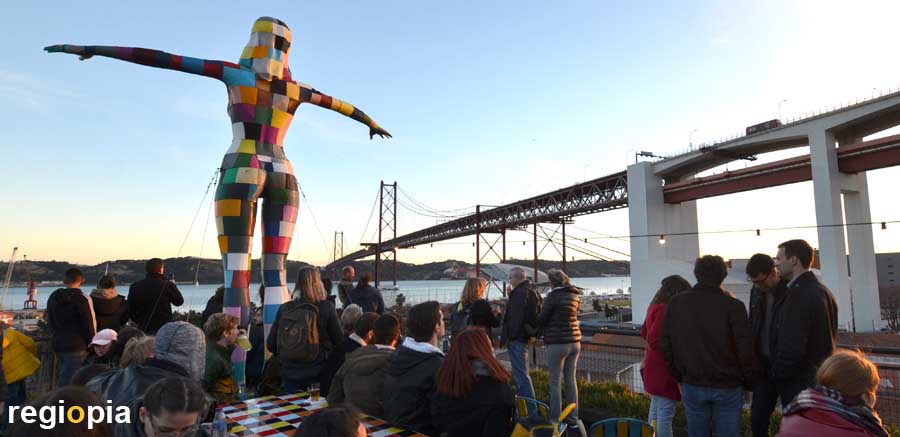
LX Factory Lisbon
The "LX Factory" is a former textile factory transformed by artists and designers into an alternative cultural hot spot. Meanwhile, the LX Factory has cafes, restaurants, bars, fashion stores, art galleries and offices. The LX Factory is open every day, the "LX-Market" (flea market for designer items) takes place on Sunday. On the roof of the factory is the bar "Rio Maravilha" (photo) overlooking the Tagus river and the "Ponte 25 de Abril". Right at the entrance you will find the Cantina LX, the most famous restaurant on the premises.
Tourist Map Lisbon
ads
Travel Guide Lisbon
Welcome to Lisbon
The Lisbon is located at the mouth of the Tejo, which has formed a large bay here. The capital of Portugal, has 550,000 inhabitants and is twice as big as Porto. However, the number of inhabitants is rather small compared with outher cities in Europe. The reason is the small area of the city, with only 84 km². For example Hannover has 530.000 inhabitants on an area of 204 km². Therefore, the true size of the city rather corresponds to that of Frankfurt or Amsterdam. Lisbon became a major port city by the Portuguese sailors. In the Belém district, the discoverers are celebrated with a large monument. Lisbon is known for "Fado", a melancholy music played in the pubs of the old town. The Fado was declared as World Heritage by UNESCO in 2011.
ads
ads
ads
Discover Lisbon
Lisbon consists of different parts that are spread over the hilly landscape. Alfama is the old town, which is located on the slopes of the hill on which the fortress São Jorge stands. The Alfama is characterized by small houses that can be reached via steep stairs. The center is called "Baixa" and has a regular checkerboard pattern. After the great earthquake of 1755, this district was completely rebuilt. The "Bairro Alto" is located on a hill west of the city center, there are many restaurants and Fado bars. The "Bairro Alto" and the neighboring "Chiado" are busiest in the evenings. Belém is located a little outside, here is the famous Torre de Belém, the Museum Coleçâo Berardo, the Museo de Marinha and the Jeronimos Monastery. This is also where the delicious "Pastel de Nata" are made, in the "Casa Pastéis de Belém".
Day Trips
From Lisbon you can get to the sea quickly. You can easily take the train to the seaside resort of Estoril, which is around 25 km away. If you are looking for natural beaches, you will find it south of Lisbon in the direction of "Cabo Espichel".
A very popular destination is Sintra. In the summer in the mountains towards the Atlantic, the kings of Portugal resided. Here you can visit the "Pálacio Nacional" and the "Palácio da Pena".
ads



